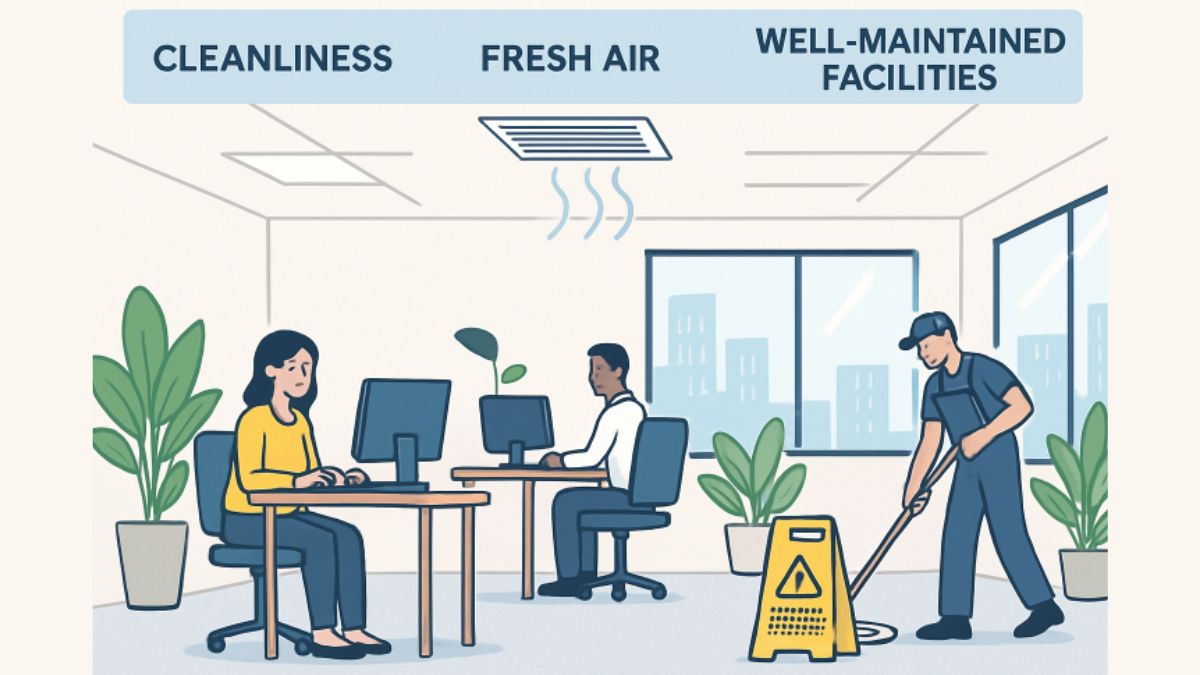TOPIC
Exploring the Importance of Automatic Gate Valves in Process Automation

Automatic gate valves are very important to a modern industrial facility where efficiency and real-time control is the main priority. The industries are moving towards new automation technologies that improve operational workflows with minimal manual expression, making reliable valve technologies all the more dominant. Fast innovations are achieved by actuated valve specialists who ensure their intricate industrial automation challenges with thorough mastery and dependable solutions.
The primary focus of this article is to address the features and design components of gate automation to deal with an enhanced efficiency across multiple sectors like water treatment, oil & gas, chemical processing, and even power generation.
Basic Concepts Behind The Operation of Automatic Gate Valves
An automatic gate valve is a subtype of flow control valves that is actuated by electricity, pneumatic or hydraulic means instead of using a handwheel or lever. Relying on standard manual gate valves, the automatic variants are externally controllable and fitted into greater automation frameworks such enabling monitoring and real-time adjustments without needing human presence.
How It Works
The motion is linear for automatic gate valves. A gate or wedge valve is associated with a mechanism, and it moves either up or down to permit or inhibit the flow of a fluid. An actuator will translate a control signal into movement, thereby opening or closing the valve. A gate valve’s sealing properties makes it suitable for on/off applications only, and not throttling.
These valves are particularly useful in systems that need a tight shutoff, such as in high-pressure steam pipelines, fuel lines, and even water distribution networks.
The Benefits of Automating Gate Valves
For sectors that want to minimize idle time and the need for manual labor, automatic gate valves are beneficial in operational efficiency and productivity when added into their systems.
Remote Control and Monitoring
Any personnel in charge can effectively manage the flow of the fluid from any location with the use of an automatic gate valve and central management application or SCADA software. This is useful in systems with large scale facilities as well as dangerous zones where manual maneuvering can lead to risks.
Enhanced Safety and Emergency Response
In case of a system failure or leak or unexpected spikes in pressure, the system can respond faster due to automation. To mitigate accidents and damage to the equipment, emergency response automatic gate valves can be shut off immediately if programmed in such a way.
Reduced Human Error
Facilities tend to minimize manual intervention to avoid the chances of redundant communication or errors that often result in process breakdowns.
Enhanced Efficiency
The correct control strategies implemented in automated systems will increase productivity and energy efficiency. Gate valves play their part by maintaining the correct flow rates in complex pipeline systems.
Key Applications Across Industrial Sectors
Automatic gate valves are very important in many industries, all of which have unique needs that actuated valve specialists are adept at fulfilling.
Oil and Gas Industry
During the crude oil, natural gas, and refined fuels transportation in oil refineries and offshore platforms, gate valves are used. Automation is used in the regulation of flow of crude oil in remote places to enhance safety and trustworthiness.
Water and Wastewater Treatment
These facilities utilize automatic gate valves for water and sludge movement control throughout the different dosages in water treatment. Their capability to provide tight shut off ensures no back flow or contamination occurs between processes.
Power Generation
Thermal and nuclear power plants exercise control over steam and cooling water circulation. They require automatic gate valves because so high pressure is inflicted, there is complete integration of the plant automation system and valve.
Chemical Processing
For isolation and control gateways, security and responsiveness must be integrated within gate valves to accommodate the volatile chemicals, and corrosive substances require automated response mechanisms. This was in regard to automation within the gate valves for this particular industry.
Automatic Gate Controlling Selection For Your System’s Automation
Careful evaluation of temperature, media features, pressure, safety prerequisites, and other factors dictate valve selection when considering automation. It is automatic, though, that attention to detail in actuated valve specialists vendors accelerates guidance and acceleration attainment.
Considerations for Selection
- Material Compatibility: Chemicals and saline water necessitate the use of Stainless steel and other resistant alloys since they are superior towards corrosion.
- Actuator Type: Screw driven electric tools guarantee effortless control, nevertheless, the movement for regions perceived as remote and hazardous may be pneumatic or hydraulic.
- Fail-Safe Features: Consider valves that are designed to reposition to a designated safe location in case of power failure.
- Feedback and Control Interfaces: The support offered by modular control system integration ensures that the value control, feedback, and response systems offer appropriate alignment with systems using Modbus and Profibus.
- Environmental Ratings: Depending on exploitable environments, specially formed IP enclosures may be required, along with certified explosion proof hedge.
Your valve selection should ensure endurance, while productivity criteria in the design must be secured. Consult with actuated valve specialists who custom tailor industry-facing solutions for ease of control, calculation, and arrangement of valve mechanisms.
Relative Automation Industrial Systems Integration
The ability to interface with high end automation systems and IoT infrastructure is perhaps the most impressive feature of automatic gate valves.
Integration of SCADA and PLC
Industrial plants utilize software such as SCADA integrated with PLCs for remote terminal control. Controlled dynamic and responsive control is guaranteed while commanding for separate actions such as opening, closing, or checking for faults. Automatic gate valves are able to report status information for open, closed or restant state.
Maintenance Done Predictively
Gate valves are able to inform and notify maintenance personnel with the help of modern active sensors and diagnostics when there is too much wearable, excessive resistance, or irregular movement and operation. This is ultimately helpful in avoiding surprises, allowing pre planned service maintenance, which in turn cuts costs and the time taken for operable systems in a firm.
Saving Energy
The consumption of great amounts of energy in utilities and large scale processing plants make energy a primary measure of performance, also known as KPI. Smart control algorithms allow valves to be controlled which in turn limits the use of pumping energy and thermal losses hence further promoting sustainability.
Importance of Collaborating With Specialists On Actuated Valves
Not every automation strategy will have the same approach and not every valve will best fit the purpose at hand. Your valves will fulfill your desired functionality, reliability, and efficiency requirements by employing trusted actuated valve specialists.
Having Support From Specialists Purpose
- Custom Solutions: Developed specific valve-actuator combinations needed for different valves in a given industrial setting.
- Compliance and Certification: Help with meeting legal standards such as ASME, API, and ISO.
- Technical Documentation and Training: Support related to proper installation, calibration, and operation.
- Ongoing Maintenance and Spare Parts: Sustaining reliability of operations over a period of time.
Not only do these specialists offer the products, but also the practical knowledge needed to apply automatic gate valves into advanced automation schemes.
Conclusion
Complementing their development, the automatic gate valve is amongst the essential components of fully automated, data-driven systems. Putting in place systems to enhance safety, reduce human involvement, improve control over processes as well as energy efficiency are some of the many reasons the automation is beneficial.
There is no doubt that choosing the correct actuated valves, as well as the appropriate contractors who will design and install them, is vital whether it is about modernizing obsolete systems or developing new facilities. This is why actuated valve specialists become valuable partners in achieving the precise, safe, and efficient automation objectives.
TOPIC
How to Plan Your Exit When Selling Your NZ Property

Selling your home is a significant milestone, and with it comes a mix of excitement and stress. Whether you’re moving within New Zealand or heading overseas, planning your exit strategically is key to a smooth transition. The property sale is only part of the equation; the logistics of your physical move—packing, timelines, legal matters, and emotional readiness—can often be overwhelming without proper planning.
This guide offers a structured approach to preparing for your move after selling your property, ensuring you meet legal obligations, protect your assets, and maintain peace of mind throughout the process.
Understand Your Legal and Contractual Timelines
When you’ve accepted an offer on your property, the first step is to revisit the sale and purchase agreement. This legally binding document outlines crucial dates, particularly the settlement date.
It’s essential to liaise closely with your conveyancer or solicitor to understand the implications of any conditions (such as finance, LIM reports, or building inspections) and ensure all legal paperwork is progressing as scheduled. Missing deadlines can result in financial penalties or legal complications, so clarity here is vital.
Create a Detailed Exit Timeline
From the moment your house goes under contract, time becomes your most valuable resource. Break down the remaining days or weeks into phases:
- Weeks 6–4 Before Settlement: Begin decluttering and donating unwanted items. Identify possessions that will require special handling.
- Weeks 4–2 Before Settlement: Book removal services, notify utility providers, and organise temporary accommodation if needed.
- Final 2 Weeks: Begin packing essentials and finalising address changes. Keep important documents and valuables separate from packed boxes.
A well-thought-out exit plan reduces last-minute chaos and helps you delegate responsibilities if you’re working with a moving company or third parties.
Consider Your Destination Early
Where you’re headed matters just as much as what you’re leaving behind. If relocating within New Zealand, research your new neighbourhood thoroughly. Check school zones, healthcare facilities, and transport options. If you’re moving abroad, additional layers such as customs regulations, visa requirements, and international shipping logistics must be accounted for early on.
In either case, working with professionals who specialise in your type of relocation can streamline the process, from handling large furniture to navigating international documentation.
Notify Utility and Service Providers
Ensure you disconnect or transfer all utilities and services ahead of time. This includes:
- Power and gas
- Water
- Broadband and telecommunications
- Subscription services (e.g., newspapers, cleaning services)
- Local council for rates and rubbish collection
Provide final meter readings and forwarding addresses where necessary. Not only does this prevent continued billing, but it also protects your credit record and avoids disputes with the new property owners.
Streamline Your Packing Process
Packing may seem straightforward, but it’s one of the most time-consuming tasks. Begin with infrequently used items and progress toward daily essentials as moving day approaches.
Label boxes clearly and consider creating an inventory for each room—especially helpful during an international move or long-term storage.
For fragile or high-value items, ensure you use proper packing materials and, where possible, take photographs before boxing them up. This aids insurance claims should anything go amiss.
Prepare for Settlement Day
On the day of settlement, the new owners will expect vacant possession unless otherwise agreed. Ensure:
- All furniture and personal items are removed
- The property is cleaned to an acceptable standard
- Keys, remotes, and manuals are ready for handover
- Any damage that occurred during moving is repaired
Keep a checklist handy to ensure nothing is overlooked, particularly if you’re coordinating the move from a distance.
Arrange Professional Help If Needed
Relocating isn’t simply about shifting belongings; it’s about ensuring your life transitions smoothly from one location to another. This is particularly true when moving across cities or countries, where logistical, regulatory, and emotional complexities multiply.
In such scenarios, it’s worth consulting with professional movers like Grace New Zealand relocation experts. These providers assist with coordinating logistics, navigating customs processes, and managing other practical aspects of a complex move.
From Sold Sign to New Beginnings
Planning your exit when selling your NZ property involves more than just packing boxes. With the right timelines, legal clarity, and support systems in place, your move can be as seamless as your sale. Whether you’re relocating down the street or across the globe, structured preparation will help ensure a confident, stress-free transition into your new life.
TOPIC
How Routine Maintenance Contributes to a Healthier Workplace Environment

Introduction
In today’s business landscape, workplace health and productivity are directly influenced by how well an office is maintained. Routine maintenance sets the foundation for a thriving work environment, from reducing daily wear and tear to ensuring that every corner remains spotless. When businesses invest in commercial cleaning services, they actively invest in their employees’ health and well-being.
The connection between a clean, functional office and overall employee performance is often stronger than many realize. Dirt, dust, and poorly maintained equipment can contribute to an environment where germs spread rapidly and air quality is compromised. By keeping facilities in optimal condition, business owners ensure every member of their staff benefits from improved air, a sense of security, and higher morale.
Consistent upkeep demonstrates an employer’s commitment to creating a safe, appealing, and practical workspace. Employees who witness a proactive approach to maintenance feel more valued, which drives engagement and performance. Not only does this foster a positive company culture, but it also reduces costs related to healthcare claims and absenteeism.
For companies looking for expert support, working with professional commercial office cleaners ensures high standards are met and sustained over time, offering peace of mind for staff and management alike.
Enhancing Air Quality Through HVAC Maintenance
Indoor air quality is one of the most critical—yet often overlooked—aspects of workplace maintenance. Regular HVAC maintenance helps remove dust, pollen, and allergens, creating a fresher indoor atmosphere. According to the Environmental Protection Agency, indoor air can be two to five times more polluted than outdoor air, posing potential health risks for employees who spend most of their day inside offices.
Scheduled filter replacements, coil cleanings, and proper ventilation keep pollutants and contaminants at bay. When air conditioning systems are functioning efficiently, they also regulate humidity, reducing the likelihood of mold growth, which can trigger allergic reactions or respiratory conditions. Clean air results in fewer sick days, sharper concentration, and a noticeable boost in workplace energy.
Reducing Illness Through Regular Cleaning
Another crucial layer of workplace maintenance is routine cleaning to keep germs and bacteria under control. High-touch surfaces such as doorknobs, elevator buttons, and breakroom counters can harbor viruses and bacteria that spread illness quickly. Frequent and thorough cleaning of these areas prevents the transmission of seasonal colds, flu, and other contagious diseases, contributing to overall office health.
By implementing a regular cleaning schedule, businesses drastically reduce the potential for outbreaks. This directly impacts productivity, as fewer employees fall ill and require time off. Clean work environments also limit allergens, such as dust mites and mold spores, improving comfort for allergy sufferers and minimizing distracting symptoms like sneezing or headaches.
Boosting Employee Morale with Well-Maintained Facilities
The state of an office impacts more than just physical health; it profoundly influences employee attitude and job satisfaction. A clean, organized environment free from clutter and hazards naturally reduces stress levels and creates a welcoming atmosphere. Employees tend to appreciate and reciprocate care displayed in their surroundings, fostering pride and engagement.
Employers investing in ongoing maintenance signal staff that their well-being is a top priority. This sense of value translates into stronger loyalty, higher morale, and increased employee retention. People are likely to perform at their best when working in a safe and appealing setting.
Preventing Workplace Accidents
Routine maintenance is also essential for keeping employees safe. Unchecked hazards such as exposed wires, loose floor tiles, or faulty lighting can result in workplace accidents, injuries, and even costly legal claims. By addressing these issues promptly, businesses safeguard employees from harm and avoid disruptions to daily operations.
Well-maintained facilities mean employees can focus entirely on their tasks without concerns about potential risks. This level of attention to safety further reinforces employer commitment to the workforce and underpins a culture of responsibility throughout the organization.
Implementing Effective Maintenance Strategies
Develop a Maintenance Schedule
Creating and following a maintenance calendar ensures key tasks are never overlooked. From daily cleaning routines to monthly HVAC inspections, systematic scheduling helps keep facilities in peak condition.
Engage Professional Services
Partnering with skilled professionals for specialized cleaning and repairs brings a higher standard of service. These experts address current issues and recommend preventative measures for long-term wellness.
Encourage Employee Participation
Inspiring staff to keep their personal work areas tidy and promptly report maintenance concerns builds a culture of shared responsibility for the workspace.
Monitor and Evaluate
Continuously assessing maintenance protocols and soliciting employee feedback allows for improvements and adaptations based on evolving office needs.
Conclusion
Investing in routine maintenance is more than a logistical concern; it’s a strategic move for cultivating a healthier, more productive, and happier workplace. From elevated air quality and reduced illness to improved morale and safety, proactive care for office environments pays dividends in the form of robust business performance and employee satisfaction.
TOPIC
HOA Management Best Practices for Modern Communities

Homeowners Associations (HOAs) are at the forefront of shaping modern residential communities. Effective management has become increasingly complex, requiring a seamless blend of robust governance, innovative technology, and community-first thinking. In today’s climate, adopting best practices not only maintains property values but also elevates residents’ overall quality of life. One important resource for navigating these responsibilities is HOA Management Meredith, which offers expertise designed to streamline HOA operations and improve community outcomes.
Modern HOA boards must align with resident expectations for transparency, accessibility, and sustainability. The trend towards digital and community-driven management indicates changing homeowner priorities. Adopting these practices fosters trust and engagement, reduces administrative burdens, ensures regulatory compliance, and enhances value for residents.
Embracing Digital Tools
HOA management is increasingly defined by the strategic integration of technology. Digital platforms, including secure online portals and mobile apps, allow residents to make payments, access documents, and submit maintenance requests at their convenience. For HOA boards, these tools simplify communications, help automate repetitive administrative tasks, and offer comprehensive budgeting and reporting functionalities, driving operational efficiency and reducing human error. The digital transformation of HOA operations has become a standard expectation, especially among tech-oriented homeowners.
Prioritizing Sustainability
With eco-conscious living rising to the forefront of community values, HOAs are prioritizing sustainable upgrades as both a duty and a competitive advantage. Modern best practices involve adopting energy-efficient lighting, implementing smart irrigation, and installing solar solutions across shared amenities. These initiatives reduce utility costs, attract environmentally-minded residents, and help comply with tightening environmental regulations. In addition, sustainable landscaping practices and green building standards are also embraced to meet evolving expectations, supporting both long-term cost savings and property value appreciation.
Enhancing Communication and Transparency
Transparent and effective communication is essential for strong, vibrant communities. HOAs now employ omnichannel strategies that combine SMS texts, scheduled email campaigns, and app notifications to keep residents informed. Detailed board portals and digital repositories for meeting minutes, rules, and policies make governance more transparent and trust-focused. Clear communication reduces misunderstandings, encourages resident participation, and keeps the community aligned on key initiatives. For further insight, CINC Systems outlines how improved communication channels have helped foster more positive and engaged associations.
Leveraging Artificial Intelligence
The adoption of artificial intelligence (AI) has started to revolutionize HOA management. AI-powered tools automate routine communication with residents, expedite tenant screening with increased accuracy, and use predictive analytics to manage maintenance tasks before issues escalate. These systems can flag potential problems, suggest cost-saving solutions, and even provide instant answers to resident inquiries via chatbots. By handling administrative and operational processes efficiently, AI allows boards to focus on strategic community improvements, raising the bar for resident satisfaction and board performance.
Fostering Community Engagement
Engagement is a cornerstone of HOA success, directly influencing community satisfaction and retention. Forward-thinking associations host regular neighborhood events, workshops, and service opportunities that encourage residents to connect outside their homes. Social media groups and dedicated community apps foster ongoing dialogue, enabling real-time feedback, event coordination, and volunteer sign-ups. Boards that actively solicit resident input and involvement not only lighten their workload but also increase buy-in and satisfaction throughout the neighborhood.
Adapting to Changing Demographics
HOAs are increasingly mindful of demographic changes, including a rise in millennial and Gen Z homeowners. These residents prefer digital-first interactions, flexible payment solutions, and amenities that support remote work or wellness-focused lifestyles. Delivering value now means adapting amenities, rules, and programs to welcome a broader array of backgrounds and interests. Prioritizing inclusivity, diversity, and representation ensures that community policies remain relevant and that residents feel heard and respected, no matter their background or stage of life.
Staying Informed on Legal and Regulatory Changes
The legal environment governing HOAs is constantly shifting. Management teams and boards must keep up with new federal, state, and local legislation affecting association governance, property management, and owner rights. Regular training, consultations with HOA attorneys, and subscriptions to industry newsletters can help ensure compliance and mitigate risk. Being proactive on these fronts protects the association from costly legal disputes and reinforces the board’s competence and responsibility to residents.
Conclusion
Pursuing best practices in HOA management positions communities for success. Embracing digital solutions, prioritizing sustainability, enhancing communication, leveraging AI, nurturing resident engagement, adapting to evolving demographics, and addressing legal obligations create strong, vibrant, and resilient neighborhoods. By staying proactive and responsive, today’s HOAs can deliver exceptional value for every resident, sustaining property values and ensuring a harmonious community environment for years to come.
-

 TOPIC12 months ago
TOPIC12 months ago7 Expert Tips For Choosing The Best Basement Renovation Companies
-

 TOPIC4 months ago
TOPIC4 months agoWhy Greece Katz Martian Has Everyone Talking in 2025
-

 BUSINESS5 months ago
BUSINESS5 months agoTop 5 Features of Sowix Online That Every User Should Know About
-

 TOPIC5 months ago
TOPIC5 months agoTop Features of BetterThisWorld .com You Need to Know About
-

 FINANCE8 months ago
FINANCE8 months agoHow TraceLoans Can Simplify Your Finances
-

 BIOGRAPHY8 months ago
BIOGRAPHY8 months agoFrom Reality Star to Business Mogul: Prince Narula Digital PayPal
-

 EDUCATION5 months ago
EDUCATION5 months agoThe Evolution of Pi123: How It Became a Must-Have Tool
-

 TOPIC5 months ago
TOPIC5 months agoSabsastaa.com: Your Ultimate Guide to Budget Shopping and Savings
